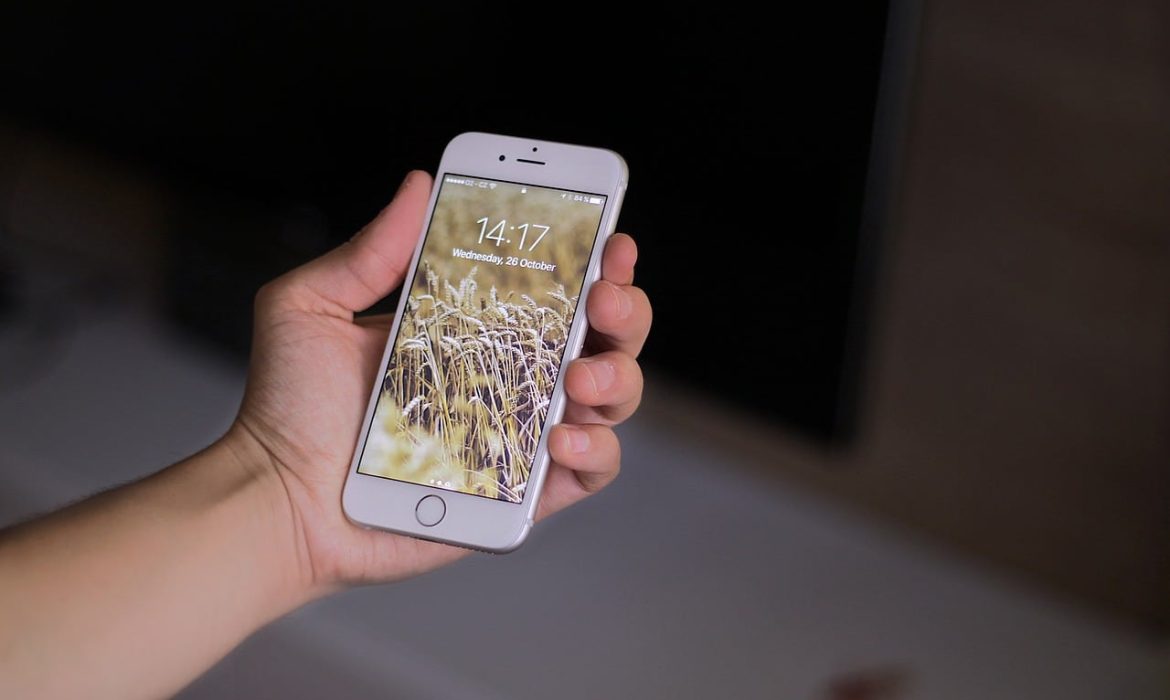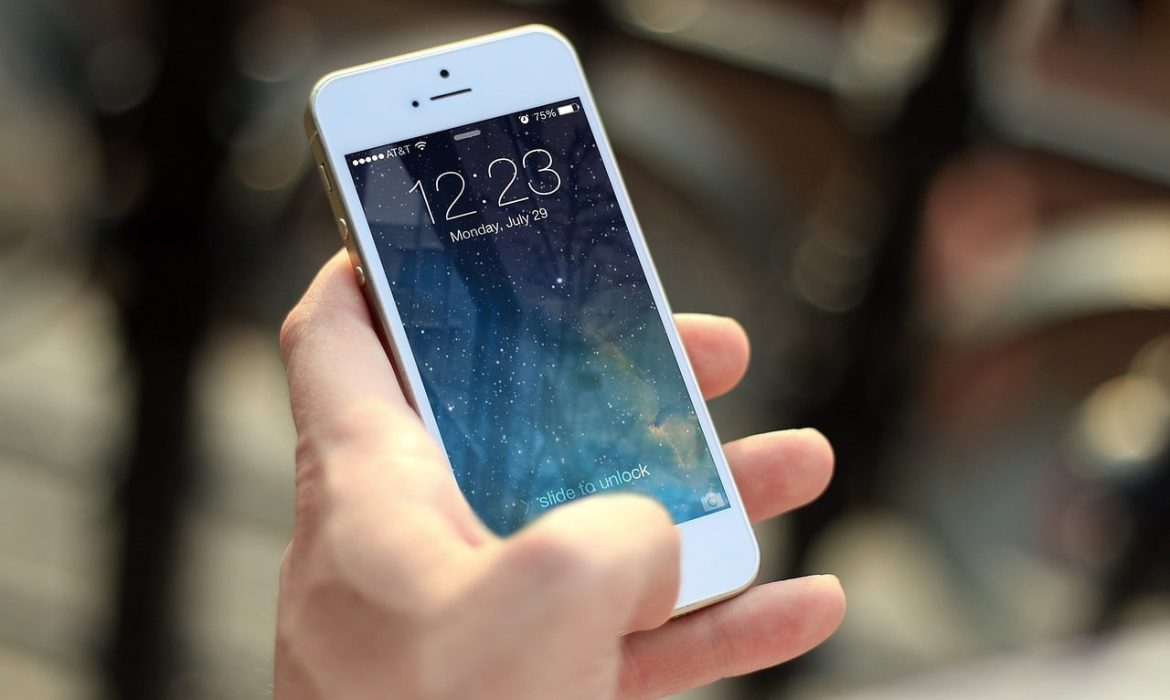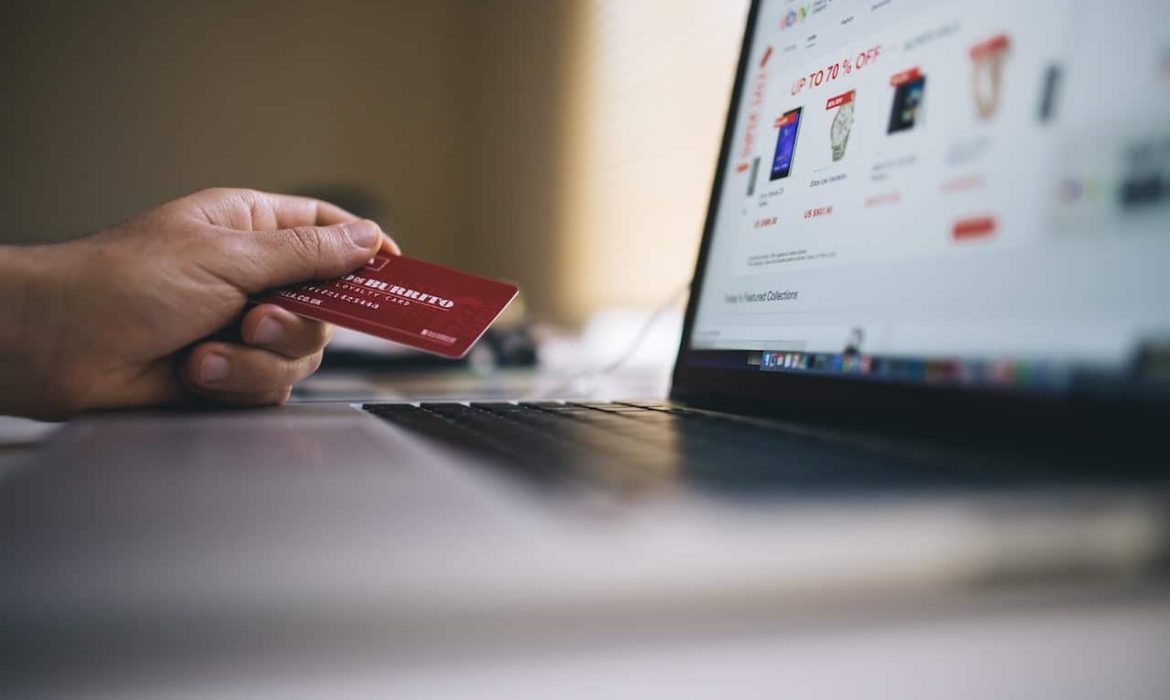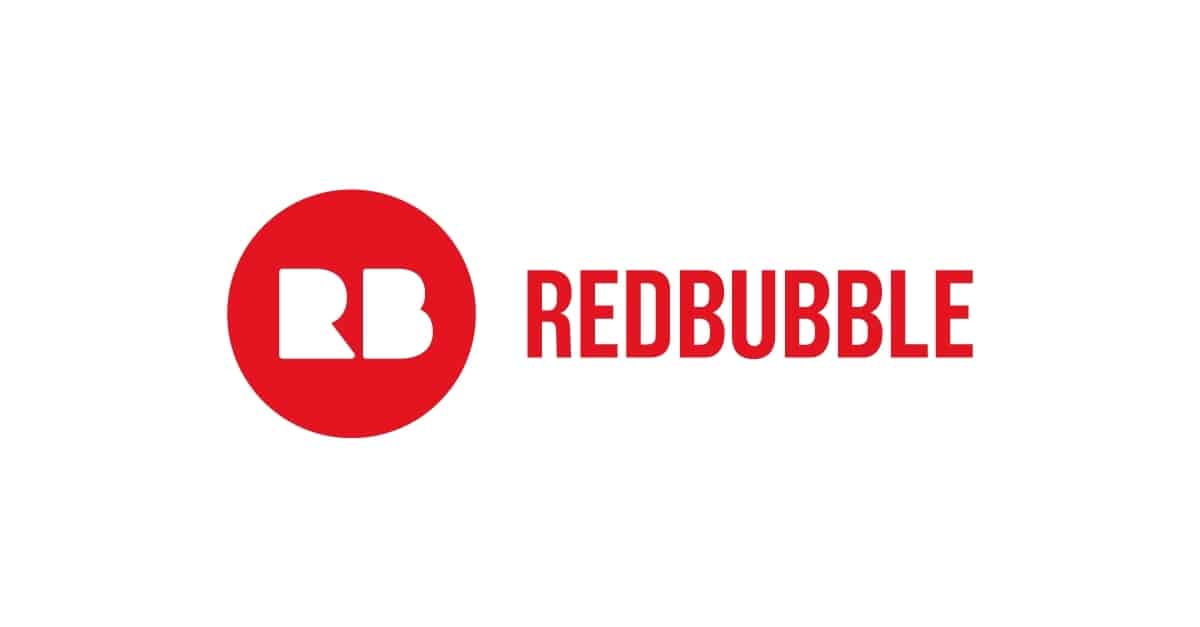IT Process Automation: Definition, Benefits & How to Get Started
One of the most effective methods for small businesses to streamline processes, save expenses, and stimulate expansion is through the use of automation technology. Particularly with regards to your technology infrastructure, you may automate a large number of formerly manual processes. IT process automation is a viable solution if managing technology is eating up precious company resources.
Information technology process automation is discussed here, along with its uses and some advice for getting started.
What is IT Process Automation (ITPA)?
Integrating automated procedures to handle IT services, support, and administration is what is known as IT process automation (ITPA). The elimination of bottlenecks in IT processes is made possible via the use of automation software.
IT process automation (ITPA) helps firms save time and money by streamlining IT processes, freeing up resources for growth-driving activities. One research found that almost two-thirds of businesses are using process automation in some capacity, with adoption continuing to rise each year.
IT process automation may help with a variety of business processes, including but not limited to the following.
- The Process of Hiring and Firing Workers
- Acquiring and distributing equipment
- Staffing plans and personnel administration
- Upgrades and fixes for cyber defense
- The Payroll and Payment System
- Information administration and reporting
Also Read – Outsourced IT Support: The Complete Guide for 2023
Benefits of Process Automation
With such a tailored and comprehensive approach, properly implemented process automation should yield several benefits for every business.
Improve Productivity
Automation of business processes is essential for companies looking to boost output. There has been an 86% increase in corporate productivity because to RPA alone. The efficiency of businesses may be greatly improved by eliminating bottlenecks, automating formerly time-consuming manual procedures, and combining all of these processes into a single, streamlined system.
Management That Is Open And Honest
Management’s attention may get fixated on the routine tasks of operating the firm, to the detriment of the company’s overall strategy and process. Owners may gain a holistic perspective on their businesses by taking the time to sit down, review existing operations, and automate where possible. Having well-defined systems allows for more in-depth analysis of the company and the prospect of future advancements.
Improve Obeisance
Process automation solutions improve conformity, whether with internal policy and norms or external regulatory authorities and agencies. There are no shortcuts, missing steps, or forgotten steps since everything happens automatically. Businesses that worry about governance, risk, or compliance should make process automation a central element of their day-to-day activities.
Cut Expenses
Saving money is one of the most appealing advantages of automating processes. Companies have reported a decrease in expenses of 59%, which has freed up resources for new ventures, expansion, and internal improvements. It was rumored that ROI may be shown in under a year.
Several causes contribute to this:
- Acceleration of computation
- Fewer snags and faster progress
- Fewer slipups
- Leaving workers with more time to focus on other projects
Better Utilisation of Staff
Improved Employee Utilization Currently, employees are spending too much time on mundane, repetitive work. Employee satisfaction will rise as a result of the elimination of these duties and the reallocation of time and resources to more productive and engaging areas of the business.
Fewer Mistakes
Mistakes have the potential to severely impact a company. It’s possible to fix issues like inaccurate addresses or incorrect orders, but doing so wastes time. If consumers begin to feel the effects of these issues, it may have a devastating effect on the company as a whole, increase turnover, and burden employees. Errors are far less likely to occur in a fully automated system.
Also Read – The Future of IT: Predictions and Trends for Businesses in 2023
Where to Begin When Automating IT Procedures
If your company is interested in adopting ITPA, you may do so by following these 4 easy steps:
Determine the ideal procedures to follow
ITPA installation begins with the selection of the processes to be automated. There should be a high potential for standardization and streamlining in these procedures, thus they should entail tasks that are now excessively repetitive and/or time-consuming.
Set organizational goals
The next stage is to define success with IT process automation. Clearly outline your expected results and key performance indicators (KPIs) so you can monitor your progress and make adjustments as needed.
Use appropriate equipment
The next step is to consult with professionals for help with implementation and to buy the necessary automation equipment. This is the first step towards getting ITPA up and running for you.
Manage changes and collect feedback
Change management and staff training round out the ITPA implementation process. Make sure your staff has all they need to handle newly automated operations, and use their input to assess key performance indicators and fine-tune your approach.
Time to Streamline IT Procedures
By automating your IT procedures, you can ensure that all of your assets are properly maintained and accounted for, which in turn boosts productivity and simplifies your workflows.
In addition, automated IT procedures can provide faster approvals, which is especially useful if your staff is dispersed geographically.
Tips To Get Into The Field of Artificial Intelligence
An AI engineer creates AI models with the use of deep-learning neural networks and machine-learning algorithms to get information about the company that may be used to make decisions with far-reaching consequences. These designers also create AIs with varying degrees of strength and weakness, each tailored to a certain purpose. Engineers in artificial intelligence typically have extensive experience in these areas. They use a variety of tools and procedures to process data and develop and maintain artificial intelligence systems.
AI developers make programs that do things like contextual advertising based on user emotion, image recognition, and language translation. The duties of an AI engineer are the focus of the next section of How to Become a Man-made Intelligence Architect.
Starting a Career in AI: What You Need to Know
Here’s what you need to do to get the level of expertise required in the field of artificial intelligence:
Five Simple Steps to Introducing AI Into Your Business
Do Extensive Research
Artificial intelligence (AI) has several potential applications in the workplace, including training and education for workers as well as scheduling, reporting, forecasting, and managing available resources. However, the specific AI deployment that will accompany each operation is flexible. Data mining may be accomplished in a number of ways, including through the use of supervised and unsupervised machine learning. This version of ML works by “feeding” the algorithm some example data in the hopes that it will be able to locate relevant records in your repository. Reinforcement learning algorithms, on the other hand, are superior at interacting with their surroundings, learning from their mistakes, and generating accurate forecasts. Due to the rapid development of AI, it is crucial that you do sufficient study to determine which choice is best for your goals and how much time and effort will be required for its training, direction, and re-directing.
Similarly, as the landscape of education transforms with the advancement of technology, traditional learning methods are being supplemented with innovative solutions such as Mathnasium tutoring, which leverages expert techniques to enhance students’ math skills in an engaging and effective manner. Integrating personalized tutoring with technology-driven insights represents a vital step forward in educational practices, aligning with the broader trend of leveraging AI and machine learning to optimize various sectors, including education.
Also Read – SaaS Security Checklist: The Complete Guide
Identify Challenges and Develop Plans
Setting objectives is the first step in any AI deployment plan once a thorough understanding of the technology’s potential and limits has been attained. The first order of business is, of course, to recognize issues that might benefit from AI applications. Evaluate your business’s workflows, data, and processes to identify areas with abundant data and suitable existing technology for integrating AI. If you think the issues may be related to your L&D strategy, you may go further deeper by conducting a training needs analysis. It’s easier to dip your toes into the intricate technology of AI if you begin with simpler, more manageable aims. For AI projects in particular, being able to quickly evaluate outcomes is crucial for calculating return on investment and making necessary modifications without breaking the bank. You may then go on to more ambitious plans once you’ve mastered the basics.
Put together a group of AI superstars.
If you don’t have qualified people leading, teaching, and managing your AI project, it will fail. Experts in data modeling, engineering, business analysis, and even visual design should all be part of your artificial intelligence team. They should have the knowledge and experience to keep your system working well and fix any issues that arise. Due to the scarcity of skilled AI specialists, assembling such a team might be challenging. Outsourcing and in-house education are two possibilities worth investigating. You may also find and network with like-minded people at conferences and boot camps.
Assess Your Resources
When it comes to hardware, artificial intelligence has stringent needs. Therefore, an essential part of any AI deployment plan is evaluating your current resources to see if they are adequate. There are three prerequisites for launching AI applications. To begin, you’ll need a tool capable of creating AI software and keeping it up and running. Second, you need access to a wealth of data and the means to clean and organize it before using it to train the algorithm. Last but not least, you’ll want sufficient storage capacity, ideally in the cloud, to keep all your data and machine learning models neatly stored and easily accessible. If any of these are overlooked, your organization may not be ready for artificial intelligence. Therefore, before you proceed, ensure that your IT infrastructure has been updated.
Also Read – The Future of IT: Predictions and Trends for Businesses in 2023
Start Small
We’ve already discussed how starting with simple objectives improves your chances of making a smooth transition towards AI. Let’s investigate that a bit more. According to studies, about half of all AI initiatives never make it past the prototype stage into production. The original concept may have been too lofty, or the machinery necessary for mass manufacturing may be too difficult to develop at this time. The rapid pace of technological advancement encourages us to think large, but in the beginning we should stick to our resources and not overextend ourselves. Get your AI project off the ground with a well-thought-out execution strategy that yields fast observable outcomes. This manner, you may safely gain insight from setbacks and adjust your strategy moving forward.
Summing up
Machine learning and artificial intelligence are two of the hottest terms in IT right now. The employment market is fruitful for those who have the requisite skills. Companies like Facebook, Google, and Microsoft are always on the lookout for talented AI and ML professionals to join their teams.
Starting early will give you a leg up on the competition if you’re interested in a career in the rapidly growing fields of artificial intelligence and machine learning.
The Future of IT: Predictions and Trends for Businesses in 2023
The rapid development of modern technology has accelerated the rate at which society can adapt to new circumstances. Every new piece of corporate technology improves efficiency, productivity, and quality of life for those involved. The rate of technological progress nowadays is almost exponential. Predictions and trends in corporate technology may be used to save money, provide better service to customers, and boost bottom lines.
There are several reasons why technological advancements have remained steady and steadying. Many businesses that are serious about staying put, though, are worried about what the next decade of business technology may bring. There are several reasons why it’s essential to keep up with the latest business trends. To begin with, it facilitates organizations’ ability to foresee and accommodate emerging technology and trends. Second, it facilitates people’s ability to keep up with breaking news and use that information to inform their own personal and professional choices. Thirdly, it aids governments in determining how to regulate and invest in emerging technologies that might have far-reaching social consequences. The following are the top predictions for business technology in 2023:
The 10 Most Important Technological Developments That Will Change Your Business
Technology now permeates even the smallest of businesses as well as the largest. The most cutting-edge technological developments in the corporate world are being used to their utmost extent to increase efficiency, boost output, and double profits.
Let’s go right into a discussion of the top 10 technological developments expected to impact the coming years.
Measures to Boost Cybersecurity
As the number of cyberthreats grows, so does the rate at which cyber security technology develops. Criminal hackers will not stop trying to break into systems unlawfully, and they will keep finding new ways to get around security protocols. Cybersecurity will be a hot topic for as long as there are cybercriminals to stop.
Digital Twins
One of the most promising developments in manufacturing technology is the use of “digital twins.” When joined with other related technologies like AI, ML, and the metaverse, they may become vital and necessary skills for enterprises aiming to achieve higher business resilience in their operations through technology.
Also Read – Customer Satisfaction: The Hinge On Which the Market Turns
Metaverse
Business owners may benefit greatly from the original Metaverse in many ways, including expanded social presence, remote work, payments, healthcare, product trade, and more. In order to differentiate their goods, reach new audiences, and build stronger relationships with their consumers, several companies are already capitalizing on this setting.
Internet of Things
The Internet of Things (IoT) is a collection of interconnected computing devices that can gather, analyze, and disseminate data from devices in the physical world to facilitate better decision making throughout an organization. There will be 50 million IoT devices in use by 2023, according to Forecast.
Artificial Intelligence
For some years now, artificial intelligence (AI) has remained one of the most talked-about developments in the world of technology. Image and speech recognition, voice assistants, navigation applications, automation, and more are just some of the areas where AI has proven itself to be better than other technologies.
Cloud Computing
Moving to Cloud Computing has several advantages. These include improved ease of use, more security, and lower overall expenses. In addition to facilitating regulatory compliance, the shift allows businesses to free up valuable resources by outsourcing labor-intensive maintenance tasks to an outside party.
Personalized and Predictive Health Care
The healthcare industry is advancing at a rapid clip due to the introduction of cutting-edge technologies. Medical experts now have the power to predict and even treat potential health concerns before a patient ever exhibits symptoms thanks to the data that can be gleaned about an individual’s lifestyle via a wristwatch.
This technological development will aid physicians in providing more individualized care for these patients, a practice known as predictive medicine. Data-driven insights on the efficacy of various therapies will propel the healthcare sector forward in the next few years.
Face Detection
It won’t be long until your face is the perfect technological companion. The trend of utilizing your face for authentication, popularized by the iPhone X’s face ID, will soon spread to other sectors.
Similar to how you can already unlock your phone by simply glancing at it, the newest face recognition technology will soon allow you to do the same thing with your internet-connected home and vehicle. It has been speculated that in the not-too-distant future, people will be able to get cash out of an ATM by only showing their faces.
5G
According to the technological trends 2023 and other forecasts, everyone will be enamored with high-speed internet and its many benefits in the years to come.
High internet speeds, lower latency, and larger capacity are just a few of the benefits that 5G, one of the top 10 developing technologies, will offer to the market very soon.
The advantages would eliminate or greatly reduce the technological challenges faced by driverless cars and wireless virtual reality. 5G would provide a dual advantage. When we communicate in VR or AR, not only would this improve the user experience by providing more info, but it would also be considerably safer. This brings up an important topic about latency.
How quickly, though, would 5G operate? Download times for movies are expected to drop from 3 hours on a 4G network to 3.6 seconds on a 5G network.
Also Read – SaaS Security Checklist: The Complete Guide
Big Data
As the number of interactions between humans and machines continues to expand, the mobile devices we carry about with us at all times will inevitably become a vast storehouse of information. There is a wealth of data just waiting to be turned into actionable intelligence that companies can utilize to provide superior customer service.
Growth of AI and ML Technologies
About a decade ago, AI (artificial intelligence) became increasingly mainstream. Some of the most widely used uses of artificial intelligence today include speech and image recognition, navigation software, and voice assistants like Siri and Alexa.
Machine learning (ML) is a branch of AI that uses human oversight to acquire new skills. Demand for experts in this field has skyrocketed, making this a fascinating development to watch.
Anticipating the next big thing in technology
There are numerous more ways in which businesses are evolving. In today’s world, when rapid technology advancements and geopolitical upheaval coexist, the only constants are change and surprise. Even in challenging times, you can position your firm for success if you are ready for the changes that are coming. You may gain an edge over the competition by keeping an eye on trends like the ones mentioned above and preparing for their potential effects on your organization.
What Does No Sim Restrictions Mean? Guide for Beginners
Learn how this concept unlocks new possibilities and grants you the freedom to use any SIM card with your mobile device.
Numerous wireless service providers may be found in every region of the world. You must insert a SIM card into your mobile handset to access their respective networks. This way, you may enjoy online videos on your iPhone, even in the middle of nowhere. When one of these providers forbids you from using a SIM card from another provider, they are engaging in SIM restrictions. Let’s understand more about what no sim restrictions mean.
What it means to have no sim restrictions
If you’re unfamiliar with iPhones and are wondering what no sim restrictions means, be assured that it merely indicates that the iPhone is unlocked and will accept a sim card from any network provider. The phone is not linked to a single carrier, so you may change the SIM card in it freely without worrying about whether or not the new card will function.
How Can I Tell If My Phone Is Unlocked?
Testing several SIM cards from different providers is the surest method to determine whether your phone is unlocked. A SIM not supported notice will appear in the screen’s upper-right corner if your phone is locked, often near the signal indicator. If there are no SIM limitations, but the phone still won’t function, resetting the network settings may help.
In such a case, you should contact your mobile service provider. If you don’t have a SIM card but are curious about your phone’s network or locking status, you may do it by entering the settings.
Also Read – 5 Safari Browser Alternatives for iOS and iPadOS
Is There a Way to Verify My iPhone has “No SIM Restrictions”?
Carriers have the option of locking iPhones. Knowing whether or not it is locked is essential before making a purchase. You can see whether your iPhone is locked in different ways. Some of which are as follows:
Method 1: Review the settings
- First, open the setting menu
- Select the Settings icon
- Third, choose the “About” tab
- The fourth step is to find the Carrier Lock option
An unlocked iPhone will say No SIM restrictions. If SIM locked appears, your iPhone is restricted to use with a single carrier until it is unlocked.
Method 2: Use a SIM card to see whether the iPhone is unlocked
- This strategy requires the use of additional SIM cards
- First, put your iPhone into aeroplane mode
- Second, take out your old SIM card
- Next, switch network providers by inserting the second SIM card
- Fourth, pick up the handset and give someone a call
Lastly, the iPhone is unlocked if the call is successful; if a notice such as SIM Not Supported appears, the iPhone is locked.
Simple Method to Unlock Any SIM Restrictions
An unlocked phone’s greatest perk is its adaptability to various SIM card networks. The same device may be used with the services of two separate carriers. If you are one of the many people whose smart phone came with SIM limitations-that is, a locked phone—you may remove such restrictions by following the steps outlined below.
To Gain Access to Your Locked Cell Phone:
- Contact your service provider to get the network unlocked
- Once your phone has been unlocked, you will get a notification
Verify the following after receiving Confirmation:
- You should switch to the new one if you already have a SIM card but are still using an older one. Your gadget will immediately start using the card.
- If you don’t have an additional SIM card, you may back up your phone, reset it to factory settings, and restore it from a backup.
Also Read – What Happens After 10 Failed Screen Time Passcode Attempts
Why Do Some SIM Cards Have Carrier Restrictions?
SIM locks, also known as network locks, carrier locks, and (master) subsidy locks, are a kind of technological limitation. It is set to lock the phone to a certain network provider. If your phone has a carrier lock no sim restrictions, you can’t use it with any other network provider.
So, before making a purchase, be sure there are no carrier locks or SIM limitations in place. If you have trouble connecting to the internet, you can try updating your APN settings or resetting your network preferences.
Is it costly to remove carrier’s SIM restriction?
There are no costs associated with activating your service provider. All that is required of you is to stick to the steps outlined above. Once the agent is satisfied that you are the rightful owner of the SIM card, the procedure to unlock the carrier lock no sim restrictions will begin, and you’ll be free to use any carrier you choose within a few days.
Conclusion
Moreover, having a no-sim restrictions iPhone may be useful. It doesn’t just let you choose anybody you want for your service. However, it might be a long-term cost-saver. At the same time, you are getting superior service and protection. You may keep using your existing phone number.
When looking for a new phone, it’s important to consider whether or not it has any sim limitations. Additionally, if you are considering switching service providers, check to see if an unlocked model is available. The maker of your smart phone may have already unlocked it. Depending on where you purchase it, a technician or other qualified someone may be needed to unlock it manually.
What Happens After 10 Failed Screen Time Passcode Attempts
Users may keep trying incorrect passcodes in an attempt to access Screen Time. However, after many unsuccessful tries to enter or reset the Screen Time passcode, your iPhone will become unusable. However, there may still be methods to bypass or disable the Screen Time restriction. Find out what is screen time passcode, what happens after 10 failed Screen Time passcode attempts and how to restore it.
What Is Screen Time Passcode?
The Screen Time feature, accessible through the Settings app, monitors your iPhone’s use and displays data like the amount of time spent in various app categories and individual applications and the number of times you’ve picked up the iPhone each day or even hour. Users may also restrict their time spent on certain content or applications. If you’re a parent, you may use Screen Time to set up various parental controls, such as app time limits and content restrictions.
What Happens After 10 Failed Screen Time Passcode Attempts?
The reply to your inquiry about what happens after 10 failed screen time passcode attempts, you won’t be able to use Screen Time for an entire hour. The Screen Time function won’t interfere with your regular usage of your iPhone. There is no way to disable the Screen Time limit or reset it in under 1 hour. When Screen Time’s restrictions expire, you’ll get another go at entering the code.
For further information on the time limit, see the list below.
- 6 wrong passcode attempts: 1-minute restriction
- 7 wrong passcode attempts: 5-minute restriction
- 8 wrong passcode attempts: 15-minute restriction
- 9 wrong passcode attempts: 60-minute restriction
- 10 or more wrong passcode attempts: 60-minute restriction
Also Read – How To Remove Activation Lock Without Previous Owner
How to Reset Screen Time Passcode After 10 Failed Passcode Attempts
The following are three methods how to get rid of failed passcode attempts on screen time:
Method 1: Reset Screen Time Passcode via iTunes
Restoring your iOS device using iTunes is the first step if you need to know how to reset the Screen Time passcode. To do so, ensure you’re using the most recent version of iTunes and that Find My has been turned off on your device. In addition, your device must have been synced to iTunes before for iTunes to identify it properly.
The Screen Time passcode may be removed by restoring your smartphone via iTunes; however, doing so will delete all your data. You may continue with these steps on how to reset screen time passcode after failed attempts if you have backed up your data or if you are not worried about losing any data.
1st Step: Launch iTunes on your computer and link your gadget to it through USB.
2nd Step: After recognising your device, choose iTunes by clicking on its icon and then selecting the Summary tab.
3rd Step: To restore your iPhone, tap the Restore iPhone option on the right side of the screen.
4th Step: Click the Restore button to confirm the restore and proceed with the operation.
Method 2: Reset the Screen Time Passcode with TunesKit iPhone Unlocker
How do reset passcode attempts on iPhone? After 10 failed Screen Time passcode attempts, you may reset the passcode by resetting the iPhone to factory settings using your Apple ID and passcode. All the information on your iOS device will be deleted. If you intend to save your data on your iPhone, you should back it up before doing a factory reset. Let’s check out the steps to restoring your iPhone from a factory setting.
1st Step: Launch iPhone’s Control Panel.
2nd Step: The General tab should be selected.
3rd Step: Find the iPhone Transfer or Reset button at the bottom of the page.
4th Step: To restore an iPhone to factory settings, choose Erase All Content and Data.
Also Read – KeyError:0 in Python: Understanding and Solving Dictionary Key Errors
Method 3: Restore iPhone Via iCloud
What happens after 10 failed passcode attempts iPhone? After 10 failed Screen Time attempts, resetting the passcode requires restoring the iPhone using iTunes. Syncing your iPhone with iTunes is required. If not, the following step requires entering Recovery mode on your iPhone. Let’s take a look at the iTunes restoration process now.
1st Step: Get a copy of iTunes and install it on your computer. The next step is to sync your iPhone with your computer.
2nd Step: Select the iPhone symbol that appears when you connect your iPhone to iTunes.
3rd Step: Go to Settings > General > Summary to restore your iPhone.
Conclusion
Screen Time is a fantastic tool for keeping tabs on how much time you spend in various applications and browsing specific material on your iOS device. Users can establish a password for Screen Time, but if they forget it, it may be very annoying and even frightening. LockEraser is the greatest option to look at when you forget your Screen Time passcode since it can unlock your iDevice in 3 easy steps, regardless of your level of technical expertise.
Can Other People See What You Search for on Twitter? & Other Safety Tips
No, your twitter searches are not public. While Twitter saves and collects your search data by default for its algorithms, no Twitter user has access to what you search for. Someone can see your search data only if they have access to your Twitter credentials or the device on which has your account logged into.
What can people see?
If your twitter account is public, people are able to see your tweets, retweets, comments, and replies to comments. Apart from that if you create lists that are public, people can also see that. They’ll be able to see your followers as well as the people you follow. Anyone on Twitter can send you a message and start a conversation.
If you have a private account, you’ll have the option to approve or disprove a follower. Only approved followers will be able to see your tweets and retweets. This works best if you want to keep your activity on Twitter among a small set of people.
Why does Twitter store your search data?
First of all, Twitter uses your search queries to understand your content preferences so that they can show you what’s relevant to you and keep you longer on the channel. Secondly, they use your searches to show you personalized advertisements. When Twitter shows you ads that align with your preferences, the click through rate goes up. Remember, advertisements are the main source of Twitter’s revenue.
Also Read – What is Website Tinting and How to Turn it Off?
How can you delete your Twitter search data?
It is pretty simple, actually. Just follow these steps
- Go to your Twitter profile
- Tap on the search tab
- Tap on the trash icon adjacent to the query you want to delete
- Tap on Delete saved data
- Confirm the deletion
Please note that deleting your search data doesn’t stop Twitter from using your date to suggest content or showing ads. You can stop that too if you wish. We’ll go into that presently.
How to stop Twitter from storing your search data?
Please note that you cannot stop seeing ads completely on Twitter by turning off search data storage. It will only mean that the ads you see are not aligned with your preferences based on your search queries. Now, let’s look at the steps to follow to disable search data usage for personalized content and ads.
- Open your Twitter account
- Go to Personalization page
- Turn the toggle switch for Personalization Data off
- Tap on Save changes
After this your search queries won’t be used to personalize your content suggestions and advertisements.
How to make your Twitter account Private
Making your Twitter account private is easy. Follow the steps.
- Tap on your profile photo
- Select Settings and privacy from the dropdown menu
- Tap on Privacy and safety
- Find the Protect Your Tweets option under Audience and tagging
- Toggle the switch on
- Enter your password when asked for
- Tap save changes at the bottom of the page.
This will make your tweets visible only to approved followers. You can control who follows you and who can see your Tweets. It is a good step to protect your information from potential stalkers and avoid unsolicited attention to your tweets.
Also Read – Why Does Dynata Call You? Is It A Scam?
Is your Twitter account safe?
While you can protect your tweets by turning on the private mode, it doesn’t guarantee the safety of your Twitter account. Twitter accounts have been hacked before and they’ll be hacked in the future. These are steps you can take to prevent your Twitter account from being hacked. In fact, these tips apply to virtually any account that is protected by a password.
- Be careful not to enter your credentials into untrusted input fields. Hackers often show you pages asking for Twitter credentials to view a piece of content on Twitter. Avoid filling in your credentials anywhere other than the legitimate Twitter login portal.
- Reset your password frequently. Passwords are often stolen in data breaches and they are added to a pool of stolen credentials. These credentials are then randomly tried to log into accounts. This works only because we are too reluctant to reset passwords and use the same passwords for multiple places.
- Use alphanumeric passwords that are at least 12 characters long. The longer your password, the harder it is to crack in a brute force attack. Be sure not to use generic passwords like 1234, or the name of your pet.
- Beware of phishing emails and social engineering attacks that try to coax you into sharing your credentials by creating pseudo-legitimate websites and user-input fields.
Just to be safe, keep the amount of personal information you share on your Twitter profile to the minimum. Do not enter compromising information on any social media platform for that matter. The less you put on the internet, the better off you are.
A Complete Guide on How to Delete Kik Account
Kik Messenger, or just Kik, is a free chat program available for iOS and Android devices. You may use it to have private conversations with other users and to share media with them. Creating a Kik account is simple. Besides, other users can see only limited data about other users. After a specific time, the app also removes your message history. However, there are several privacy concerns with the program. These include IP recording and a lack of end-to-end encryption. In this article, you will learn how to delete Kik account completely.
Steps to Delete Kik Account on Iphone
How to delete Kik a account on an iPhone is a common topic of inquiry. If you don’t want to keep using Kik and have no intention of ever using it again, you must delete your account. If you delete an account, you lose the option to reinstate it later. Be sure you want to deactivate your Kik account permanently before continuing with the procedures below.
Step 1: Go to the Kik website – Permanently deactivating your Kik account requires visiting the Kik support website. There is a link at the bottom of the page where you may exit the service by providing your login, email address, and the reason for leaving.
Step 2: Check your email – To completely remove your Kik account, please open your email and click on the link sent to you.
How to Delete Kik Account on Android?
Can you follow the same steps on how to delete Kik account on android as for iPhone? Both the Android and iOS platforms follow the same procedures. This account of yours will be removed. Without a valid email address, no one can contact you via the app, and no one can access your profile. If you wish to use the app again after deactivating your account, you must make a new profile.
Also Read – How To Block And Unblock Someone On Spotify?
Is There A Way to Delete the Kik Account Without Email?
Forgot your email account and want to know how to delete a Kik account without email? Don’t stress if you can’t remember or access the email address you used to sign up! You can contact the Kik support team for help so long as you know your username. A Kik account can’t be deleted if the user doesn’t know the associated email address and username.
The 2023 Ultimate Guide to Deleting Your Kik Account
Follow these steps:
1st Step: Log into Kik’s account deletion center through a web browser.
2nd Step: Verify your account by providing the email address and username you used to sign up for Kik.
3rd Step: Pick your primary reason for deleting the Kik account from the drop-down menu, then offer further facts in your own words in the text box below.
4th Step: Click the Go button after checking the box stating you wish to quit Kik permanently.
5th Step: Check your email, then follow the link to delete your Kik account permanently.
How Can You Delete a Kik Account Permanently Without Email?
You should contact Kik support if you want to remove your account but can’t access the associated email address. Removing a Kik account or logging in to the app is impossible if you don’t have the associated email address or username. Only Kik support can assist you on how to delete a Kik account permanently without email.
How Long Does It Take for Kik to Delete Your Account?
Many users ask about how long does it take for Kik to delete your account? Therefore, when you delete your Kik account, it’s gone for good and other users won’t be able to discover it either. Your account is now permanently deleted, and if you want to use the service again, you’ll need to create a new profile.
Also Read – How to Block or Allow Pop-Ups and Redirects in Safari
How Can I Permanently Delete My Kik Account?
The following is a rundown of the steps:
1st Step: Go to the Kik delete page on your browser.
2nd Step: Choose a reason for deleting Kik and provide your Kik username and the email address you used to sign up for Kik.
3rd Step: Fill out the “Additional info…” area with any further information.
4th Step: After confirming that you want to delete your account permanently, click the button that reads “Go.”
5th Step: Look for a deactivation email in your email account. At the very bottom of the email is a link labeled Permanently Deactivate that you should click.
Conclusion
Now that you’ve read this, you should understand about Kik instant messaging service and how to permanently delete my Kik account. It is the finest approach to permanently remove all traces of your Kik account, messages, and media assets. Once done, you may deactivate or remove your Kik account as needed.
Top 6 Best Shopify Competitors & Alternatives for Your Online Store
When it comes to setting up online stores, Shopify is a fan favorite with over 6000 applications on the Shopify app store to assist merchants along their way of building an e-commerce platform and improving online presence. Does that mean shopify is the only commerce platform you can count on to build your shop? The answer is a resounding no. There are several alternatives to Shopify that are worth checking out. That’s why we have brought a collection of platforms that you can use instead of Shopify in 2023. We will cover six Shopify alternatives that may help you set up your online venture.
Top Shopify Alternatives of 2023
Let’s look at some of the most promising Shopify competitors that can be more suitable for your needs and make a smaller hole in your pocket. This is by no means an exhaustive list. There are other tools that might be more suitable for your specific business needs. So, if we miss a Shopify competitor that you really like, please feel free to let us know. Let’s jump into the list, shall we?
1. WooCommerce
The first name that comes to mind while looking for competitors of Shopify is definitely WooCommerce. With payment acceptability from 140+ payment gateways, a free plugin, and easy integration with WordPress sites, WooCommerce hits the trifecta of e-commerce goodness. While WooCommerce is free and open source, you’d still need to pay for hosting, domain name, and an SSL certificate.
Pros
- It’s open source
- No monthly charges for using WooCommerce payment
- Instant deposit using WooCommerce payment.
Cons
- Only for WordPress sites
- Not the easiest to use
2. Ecwid
Ecwid stands for e-commerce widget. It is an easy-to-use Shopify alternative that has both free and paid plans. You can add Ecwid to your existing site across a range of frameworks by simply adding a few lines of code. It comes with a drag and drop interface, GDPR compliance, and unlimited bandwidth. The paid plan offers you services like inventory management, digital products, discount coupons, and whatnot. The paid plans start at $14.08 per month.
Pros
- Let’s you turn an existing site into a store
- State of the art drag and drop editor
- GDPR compliant
- Unlimited bandwidth even on free plans
Cons
- You need a business plan or higher to create custom orders.
Also Read – 5 Tools to Find Out Who Called You From This Number
3. Sellfy
Sellfy is a great Shopify alternative specifically for businesses that deal in print on demand (PoD) products like T-shirts, mugs, posters, and whatnot. It has an inbuilt print-on-demand feature which makes it an exciting Shopify alternative for businesses dealing in PoD products. With the paid plans that cost $19 per month when paid biannually, you get email marketing, and custom domains. On the higher-tiered plans you get features like cart-abandonment, product upselling, product migration, etc.
Pros
- 24/7 support
- Built-in print on demand
Cons
- Annual sales limits even on paid plans
4. Wix
Wix is one of the biggest Shopify competitors offering an intuitive drag and drop shop editor. It is especially suitable for DIY shop owners with a head full of ideas. Wix makes it quite easy for you to customize your store without breaking your bank. The paid plan costs $27 per month. It comes with cart abandonment and recovery, social selling, unlimited storage, video hours, etc.
Pros
- Over 800 free templates
- Free domain name if you pay for a whole year or more
- Leading drag and drop editor
- Mobile responsive stores
Cons
- Can’t accept payments on the free plan
5. Shift4Shop
Shift4Shop is a nice, affordable, well-rounded Shopify competitor which is great for small businesses. You can start selling your products on Shift4Shop by creating a mobile and SEO friendly store. You can customize your store using the templates or hire a Shop4Shift engineer to help you set your store up. The paid plan comes at $29 per month.
Pros
- Need not pay to use the payment gateway
- Special incentive for switching from other platforms
- 24/7 support
Cons
- Requires HTML and CSS knowledge for customization
6. Squarespace
Squarespace allows you to build beautiful and professional looking strefronts without an ounce of coding knowledge. It is highly customizable, has a bunch of templates, and offers 24/7 customer support. Squarespace comes for $16 per month. If you want to use the e-commerce feature, it costs $23 per month. The business plan comes with quite few upgrades and features.
Pros
- Easy to use
- Free domain name and SSL
- SEO feature for every plan
Cons
- E-commerce feature only for business plans.
FAQs about Shopify
How can I find out what shopify themes my competitors use?
It’s quite simple actually. Just follow the steps
- Go to a Shopify detector site
- Paste the URL for your favorite Shopify store
- Hit the Detect Theme button
- Get the theme name
- Log into Shopify and search for the theme name you discovered.
How to find my competitors on Shopify?
Go to Google and type, site:myshopify.com followed by your main target keyword. You will see who is leading in your niche. Shopify has over 600,000 merchants, but it is a good practice to keep an eye on your closest competitors.
What is the cost of using Shopify?
Shopify Basic costs $29 per month, with 2.9% + 30¢ per online transaction. The pricing is quite reasonable when you consider the other players in the market.
Wrapping up
The e-commerce business has burgeoned and ballooned up out of proportion over the last few years. Tools like Shopify, Wix, and Squarespace have made it possible for business owners to take their business online without hiring a whole team of IT professionals. Platforms such as these play a vital role in the well-being of small and midsize businesses that do not necessarily have a team to take care of online selling.
Now you know a bunch of fantastic tools that can give Shopify a run for its money. WooCommerce is the gold standard when it comes to Shopify competitors. Let us know what’s your favorite.
KeyError:0 in Python: Understanding and Solving Dictionary Key Errors
If you’re working with Python and using dictionaries, you may have come across the “KeyError: 0” error message. This error occurs when you try to access a dictionary key that doesn’t exist.
In this article, we’ll discuss what a KeyError is and how key-value pairs work in a dictionary. We’ll also explore several methods you can use to fix KeyError: 0 in Python.
What is KeyError?
In Python, a dictionary is a collection of key-value pairs. Keys are used to access values in a dictionary. When you try to access a value with a key that doesn’t exist in the dictionary, Python raises a KeyError:0.
Here’s an example:
my_dict = {‘apple’: 1, ‘banana’: 2, ‘orange’: 3}
print(my_dict[‘grape’])
The output will be:
KeyError: ‘grape’
This error occurs because ‘grape’ is not a key in the dictionary.
How to fix KeyError:0 in Python
Now that we understand what KeyError is, let’s look at some methods we can use to fix it.
Method 1: Using the get() method
One of the easiest ways to avoid a KeyError is to use the get() method. The get() method returns the value for a given key if the key exists in the dictionary. If the key doesn’t exist, the method returns a default value (which can be specified as an argument).
my_dict = {‘apple’: 1, ‘banana’: 2, ‘orange’: 3}
print(my_dict.get(‘grape’, 0))
The output will be:
0
Here, we’re trying to get the value for the key ‘grape’. Since ‘grape’ doesn’t exist in the dictionary, the get() method returns the default value of 0.
Method 2: Using a try-except block
Another way to handle KeyError is to use a try-except block. The code inside the try block will be executed, and if a KeyError is raised, the code inside the except block will be executed.
my_dict = {‘apple’: 1, ‘banana’: 2, ‘orange’: 3}
try:
print(my_dict[‘grape’])
except KeyError:
print(“Key not found”)
The output will be:
Key not found
Here, we’re trying to print the value for the key ‘grape’. Since ‘grape’ doesn’t exist in the dictionary, a KeyError is raised. The code inside the except block is executed, which prints “Key not found”.
Also Read – How to Deal with the Google Chrome Critical Error Message?
Method 3: Using the ‘in’ operator
The ‘in’ operator can be used to check if a key exists in a dictionary.
my_dict = {‘apple’: 1, ‘banana’: 2, ‘orange’: 3}
if ‘grape’ in my_dict:
print(my_dict[‘grape’])
else:
print(“Key not found”)
The output will be:
Key not found
Here, we’re checking if ‘grape’ exists in the dictionary. Since it doesn’t, the code inside the else block is executed, which prints “Key not found”.
Method 4: Using a try-except-else block
You can also use a try-except-else block to handle KeyError. The code inside the try block will be executed, and if a KeyError is raised, the code inside the except block will be executed. If no exception is raised, the code inside the else block will be executed.
my_dict = {‘apple’: 1, ‘banana’: 2,
try:
print(my_dict[‘grape’])
except KeyError:
print(“Key not found”)
else:
print(“Value:”, my_dict[‘grape’])
The output will be:
Key not found
Here, we’re trying to print the value for the key ‘grape’. Since ‘grape’ doesn’t exist in the dictionary, a KeyError is raised, and the code inside the except block is executed, which prints “Key not found”. If ‘grape’ existed in the dictionary, the code inside the else block would be executed, which prints the value of ‘grape’.
Method 5: Using Exception handling
You can also use generic Exception handling to handle all types of errors, including KeyError. However, using this method is not recommended because it can hide other types of errors that may occur in your code.
my_dict = {‘apple’: 1, ‘banana’: 2, ‘orange’: 3}
try:
print(my_dict[‘grape’])
except Exception as e:
print(“Error:”, e)
The output will be:
Error: ‘grape’
Here, we’re using generic Exception handling to catch any type of error that may occur. The error message will display the name of the error, which is ‘grape’.
Also Read – What is Website Tinting and How to Turn it Off?
Disadvantages of these methods
While these methods are effective in handling KeyError, there are some disadvantages to be aware of. Using the get() method can lead to unexpected results if you’re not aware of the default value that’s being returned.
Using try-except blocks can also hide other types of errors that may occur in your code. The ‘in’ operator method requires extra code to be written and may not be the most efficient way to handle KeyError. The try-except-else method is more complex and may be overkill for simple programs.
Finally, using generic Exception handling can lead to code that’s harder to debug and maintain.
Conclusion
KeyError:0 is a common error that can occur when working with dictionaries in Python. The methods we’ve discussed in this article can help you handle KeyError and avoid program crashes. However, it’s important to understand the limitations and potential pitfalls of each method to ensure that your code is maintainable and easy to debug. By using the appropriate method for your program and being aware of its limitations, you can write more reliable and error-free code.
Is Redbubble a Legitimate Marketplace for Independent Artists and Designers?
Is Redbubble a legitimate online marketplace? This is a question that many consumers ask, particularly in terms of product delivery, customer service, and copyright policies. While Redbubble has been operating for over 15 years and has become a popular platform for artists and designers, there are concerns about its authenticity. Exploring the company’s origin, growth, and track record can help determine whether Redbubble is a trustworthy platform for buying and selling art and design products.
The platform, Redbubble, was founded in Melbourne, Australia in 2006 by Martin Hosking, Peter Styles, and Paul Vanzella. Since its inception, Redbubble has grown into a global community of over 1 million independent artists and designers who have created more than 20 million designs that are available on a wide variety of products.
The Origin of Redbubble
The founders of Redbubble were passionate about creating a platform that would allow independent artists and designers to showcase their work and connect with customers from around the world. They wanted to create a marketplace where people could find unique and personalized products that weren’t available in traditional retail stores. With this vision in mind, they launched Redbubble in 2006.
How Redbubble Has Grown and Spread Across the World
Redbubble quickly gained popularity among independent artists and designers who were looking for a platform to showcase their work. The platform expanded rapidly; by 2008, it had offices in San Francisco and Melbourne. In 2014, Redbubble went public and raised $15.5 million in its initial public offering. The company now has a presence in more than 20 countries and has become one of the most popular online marketplaces for art and design.
The Current Status of Redbubble as a Business
Redbubble is a thriving business that has continued to grow and expand over the years. In 2020, the company reported revenue of $349 million and had more than 10 million active customers. Redbubble has also been recognized for its innovative approach to e-commerce and was named one of Fast Company’s Most Innovative Companies in 2021.
Authenticity of Redbubble
Redbubble is a legitimate company that has been in operation for over 15 years. The platform is known for its high-quality products and excellent customer service. While there have been some complaints about delivery times during the pandemic, Redbubble has worked hard to improve its shipping processes and is now delivering products on time.
Also Read – Why Does Dynata Call You? Is It A Scam?
Copyright Policies on Redbubble
Redbubble takes copyright infringement very seriously and has implemented a number of policies to protect the intellectual property of artists and designers. The platform uses advanced technology to identify and remove copyrighted material, and it has a team of dedicated moderators who review all content that is uploaded to the site. Redbubble also provides a platform for artists to report any copyright infringements and has a legal team that can take action against infringing parties.
How Artists Can Use Redbubble to Their Benefit
Redbubble provides independent artists and designers with a unique opportunity to showcase their work and connect with customers worldwide. Artists can upload their designs to the platform and have them printed on a wide range of products, including clothing, home decor, and accessories. Redbubble handles all of the manufacturing and shipping, allowing artists to focus on creating new designs and growing their brands.
Conclusion
Redbubble is a thriving online marketplace that has become a go-to destination for independent artists and designers who are looking to showcase their work and connect with customers from around the world. The platform has grown significantly since its inception in 2006 and is now a global community of more than 1 million artists and designers. Redbubble is a legitimate company that provides high-quality products and excellent customer service. With its advanced copyright policies and innovative approach to e-commerce, Redbubble is a great platform for artists who want to showcase their work and build their brand.













